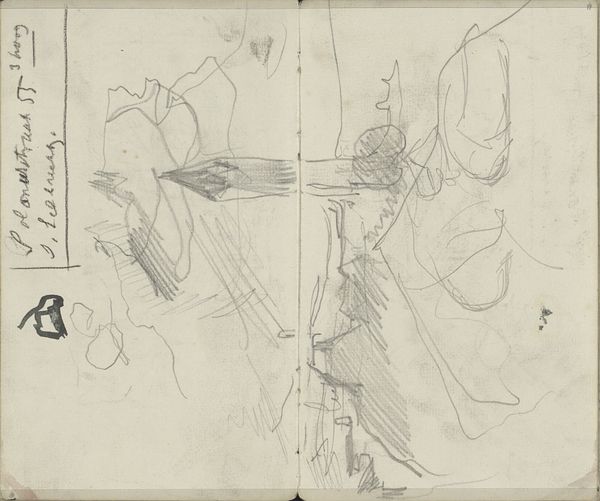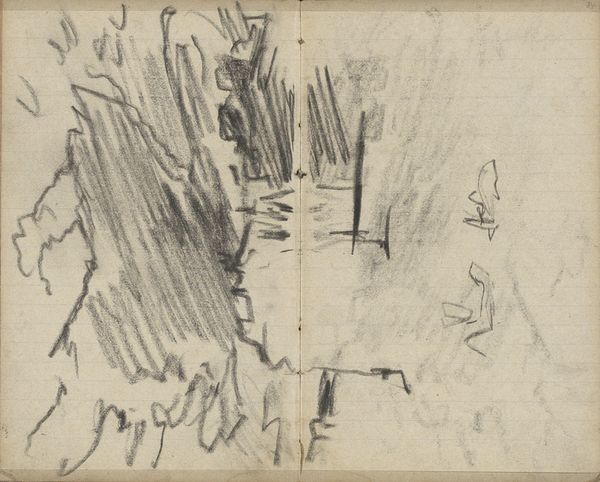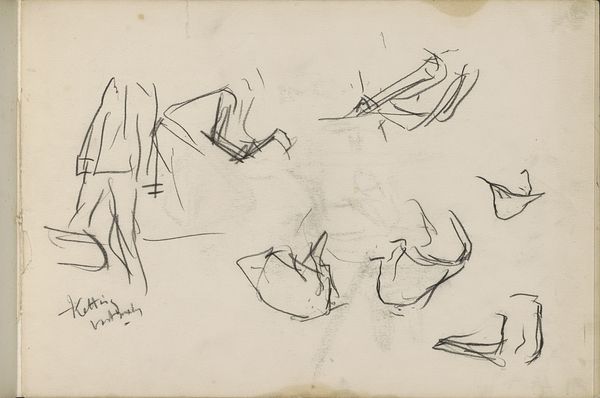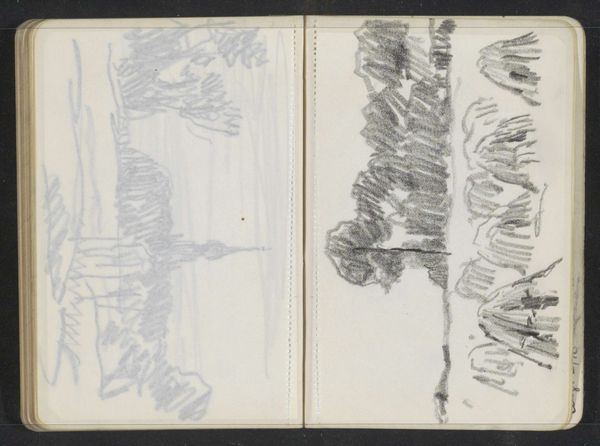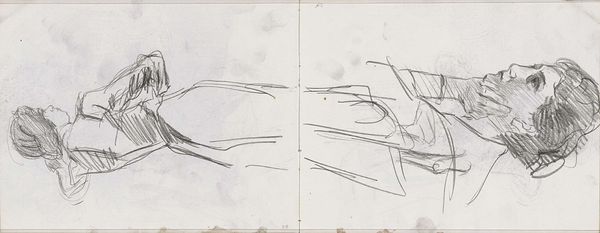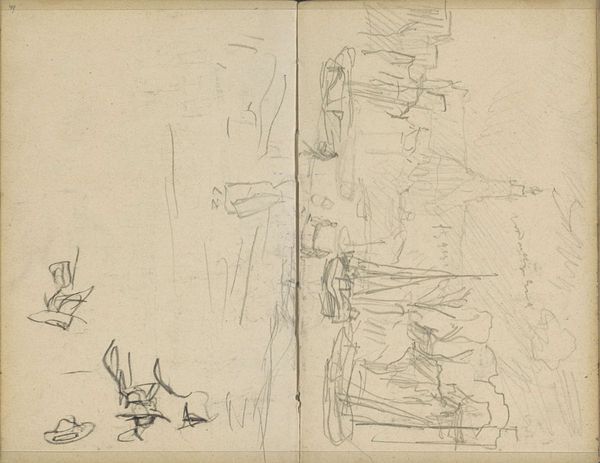
drawing, pencil
#
portrait
#
drawing
#
pen sketch
#
hand drawn type
#
figuration
#
personal sketchbook
#
idea generation sketch
#
ink drawing experimentation
#
pen-ink sketch
#
pencil
#
pen work
#
sketchbook drawing
#
sketchbook art
#
modernism
#
initial sketch
Copyright: Rijks Museum: Open Domain
Curator: Here we have Isaac Israels' "Mannen tegenover elkaar," a pencil and ink drawing dating from around 1930 to 1934, held here at the Rijksmuseum. My immediate impression is one of intimacy, like we're peering into the artist's personal sketchbook. Editor: I'm struck by how quickly it's made. The urgency in the lines and smudges suggests an artist capturing fleeting moments before they disappear. The visible marks speak to its creation as a rapid, perhaps on-site, study. Curator: I agree. There's something deeply human and relatable about these rough sketches, men observed in their daily lives, rendered with such immediacy. They evoke a sense of observation that invites empathy. Editor: Look closely. You can almost see the pressure of the pencil, feel the texture of the paper. What sort of paper? It appears lightweight. Israels chose a ground that absorbed ink in such a way to permit shadowing through multiple quick gestures. What sort of impact would that immediacy have? Curator: Perhaps it's the unfinished quality that lends it such power. These are not idealized figures but rather impressions of reality, captured in the raw, honest language of the sketch. We almost see the process. Editor: These kinds of drawings represent work. It’s a labor-intensive endeavor. Note how this sits in the artist’s oeuvre—is there more we can gather? Do we know what pencil weight he might favor? How many sketches exist alongside this one, from the same era? This process provides significant insights. Curator: Absolutely, and within that process we observe how modern life and culture are internalized—reflected through a highly individual gaze, giving those figures both specificity and universality. Editor: It's also tempting to read these figures as allegories for some greater commentary; the starkness evokes questions of vulnerability. What sort of exchange existed, or was desired? Curator: The symbolism, the rawness of the line, and ultimately, the way we come to empathize, offer a look into the transient reality and human connections during a certain place in time. Editor: The unvarnished materiality offers such insights into the artist’s vision and technical practices. I find that really remarkable here.
Comments
No comments
Be the first to comment and join the conversation on the ultimate creative platform.

